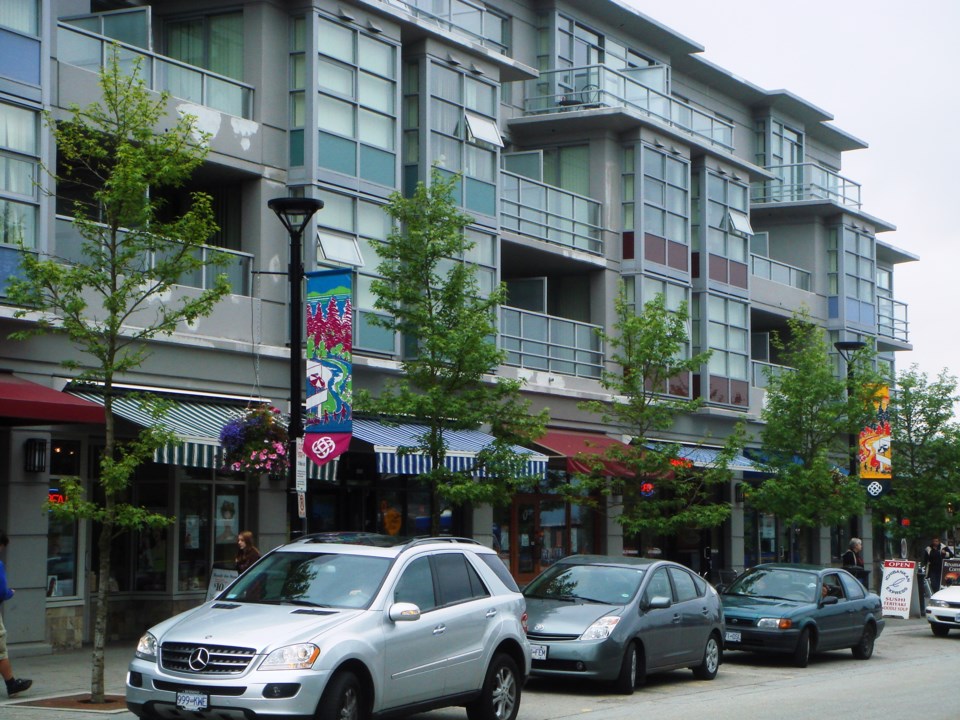Hardly a day goes by when affordable rental housing is not front and centre in the media. Recently much has been written about the rejection of controversial rezoning applications in Vancouver, North Vancouver and White Rock.
Increasingly, we read about other municipalities using “rental-only zoning” to protect older buildings or “inclusionary zoning” requiring new rental units alongside new condominiums.
Reflecting on my five decades as an architect, CMHC official and developer, other innovative affordable rental housing ideas come to mind. I recently shared some of them in an interview with The Scrivener, the publication of the BC Notaries Association.
In 1970, on a CMHC Travelling Scholarship, I toured modular housing factories across the U.S. Returning to university, as my thesis I designed a system of relocatable modular units to be set up on vacant sites across Toronto. The objective was to create affordable housing by avoiding or minimizing the cost of land.
Four decades later in 2009, I studied this concept for B.C. Housing, and today relocatable modular housing has become an effective affordable housing solution for the homeless around the province.
However, it need not be just for the homeless. Private and non-profit companies can create affordable rental housing for a broader population by setting up relocatable modular units on other vacant lots awaiting redevelopment. Governments might offer tax abatements to those who allow their land to be used for this purpose, similar to community gardens.
As a student, I lived in a large house with six other people. We each had our own bedroom but shared the bathroom and living spaces. No doubt many of you did the same.
In1972, I moved into Ottawa’s Pestalozzi College, a Trudeau government-funded 22-storey cooperative-living highrise. Older Torontonians will remember Rochdale College, part of the same cooperative housing experiment.
One of the things that made Pestalozzi College unique was its design. Half the building comprised of one-bedroom apartments and the other half offered communal suites for six to 14 people. The latter included partially furnished bedrooms, shared bathrooms and living areas with kitchens, not unlike some student residences and the house I left behind in Toronto.
The one-bedroom apartment design was different from the typical Vancouver one-bedroom layout, which usually has an open living-dining-kitchen space and separate bedroom.
The Pestalozzi apartments had an eating area in the kitchen and a lockable door to the living room. This allowed it to become a bedroom at night. Consequently, the suite was comfortably shared by two unrelated people with undisturbed access to the kitchen or bathroom.
At SFU’s UniverCity community, we built similar suite layouts within the Cornerstone Building. However, they had a double-door to the living room creating a more deluxe one-bedroom or smaller two-bedroom unit, all within 600 square feet. By simply adding a door to the living space, the apartment layout become much more flexible and affordable.

Another UniverCity innovation is the “lock-off suite.” It was an attempt to create the equivalent of a basement suite within a multi-storey apartment building. The key to its design was an additional door from the corridor into the second or third bedroom, and a small closet area that could be converted to a kitchenette.
Thanks to the open mindedness of Burnaby staff and Council, UniverCity’s zoning allowed lock-off suites in up to 50 per cent of the homes, resulting in both affordable rental housing and “a mortgage helper in the sky.” West Vancouver and Vancouver now allow similar arrangements, but the idea has not really caught on. It will.
But back to co-living. Today, many companies such as Welive,Common and Ollie are developing buildings offering fully furnished studios and shared suites with hotel-styled services, amenities and even organized events. A colleague calls it supportive housing for millennials.
While not everyone wants to share, increasingly co-living is becoming a viable affordable housing solution, and not just for singles. Kin, a collaboration between Common and Tishman Speyer, a major international real estate company, is now offering co-living for urban families.
Given our urgent need for more affordable rental housing, let’s hope these options will be added to other choices available in the city.



